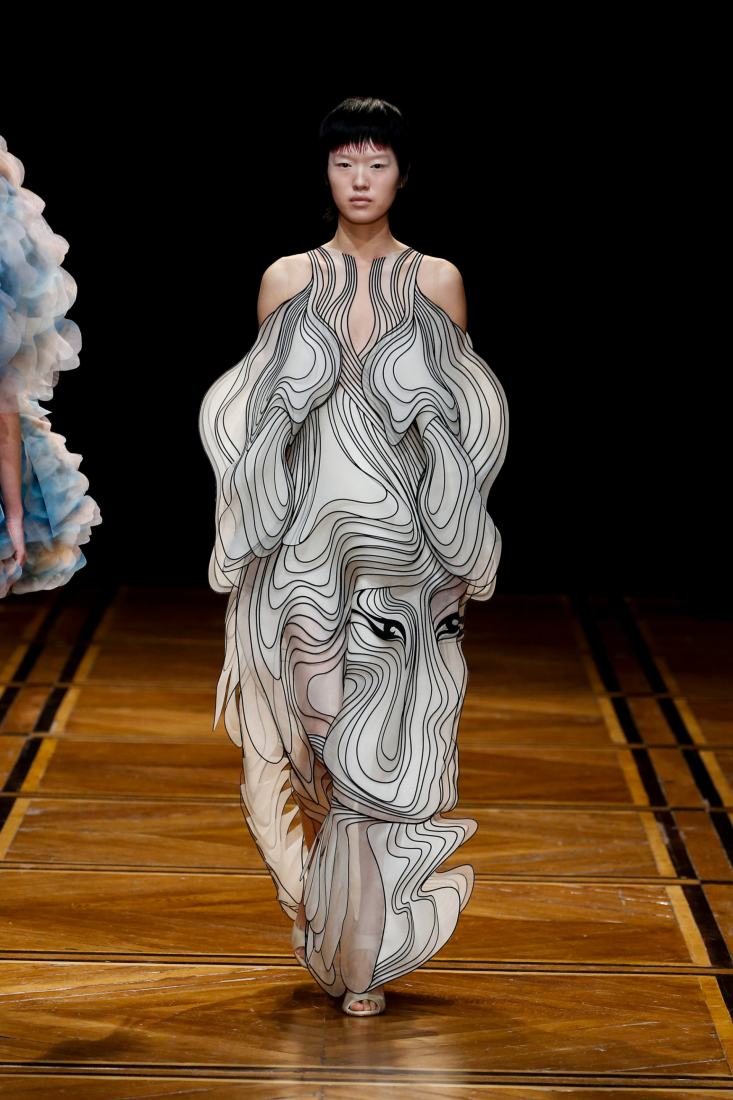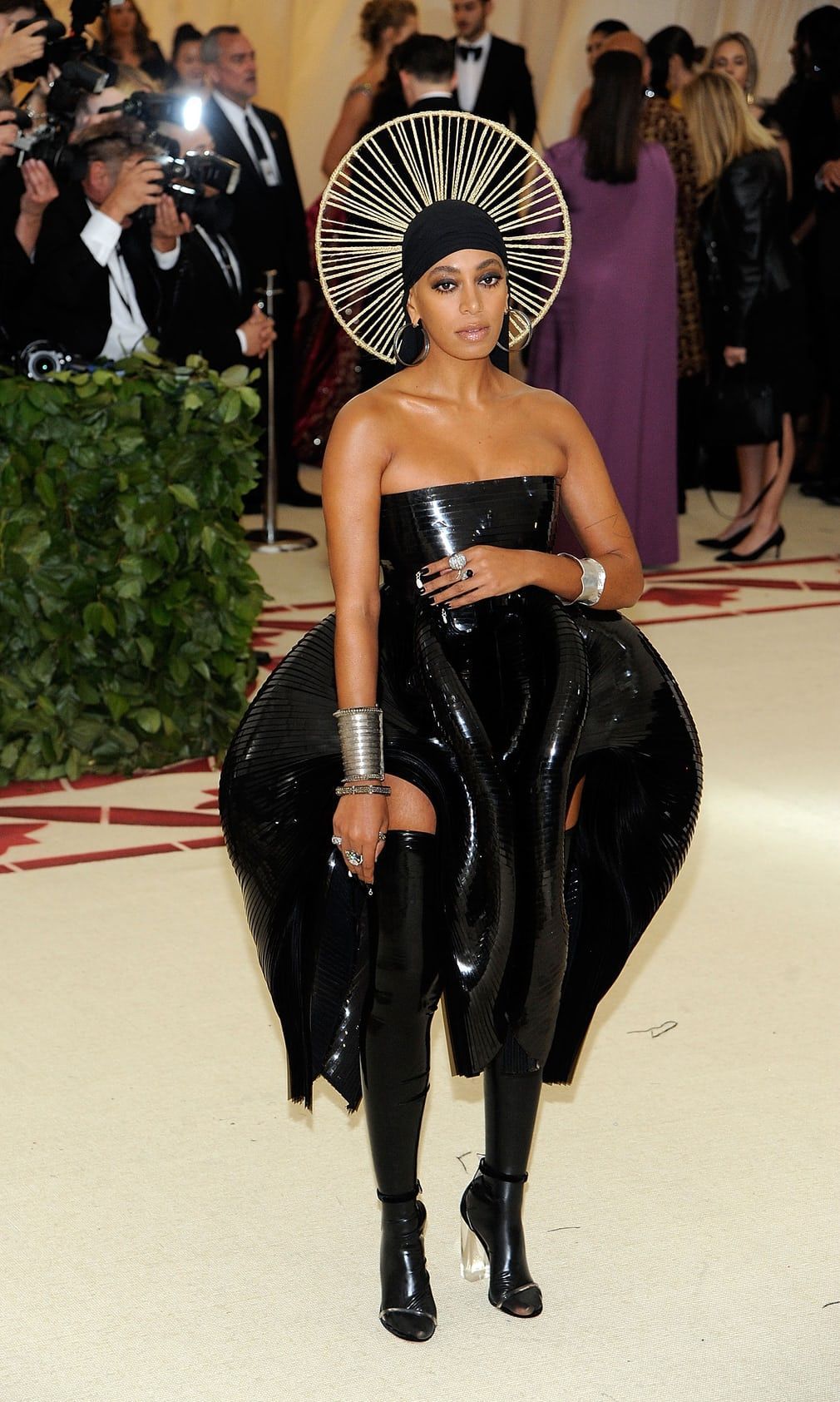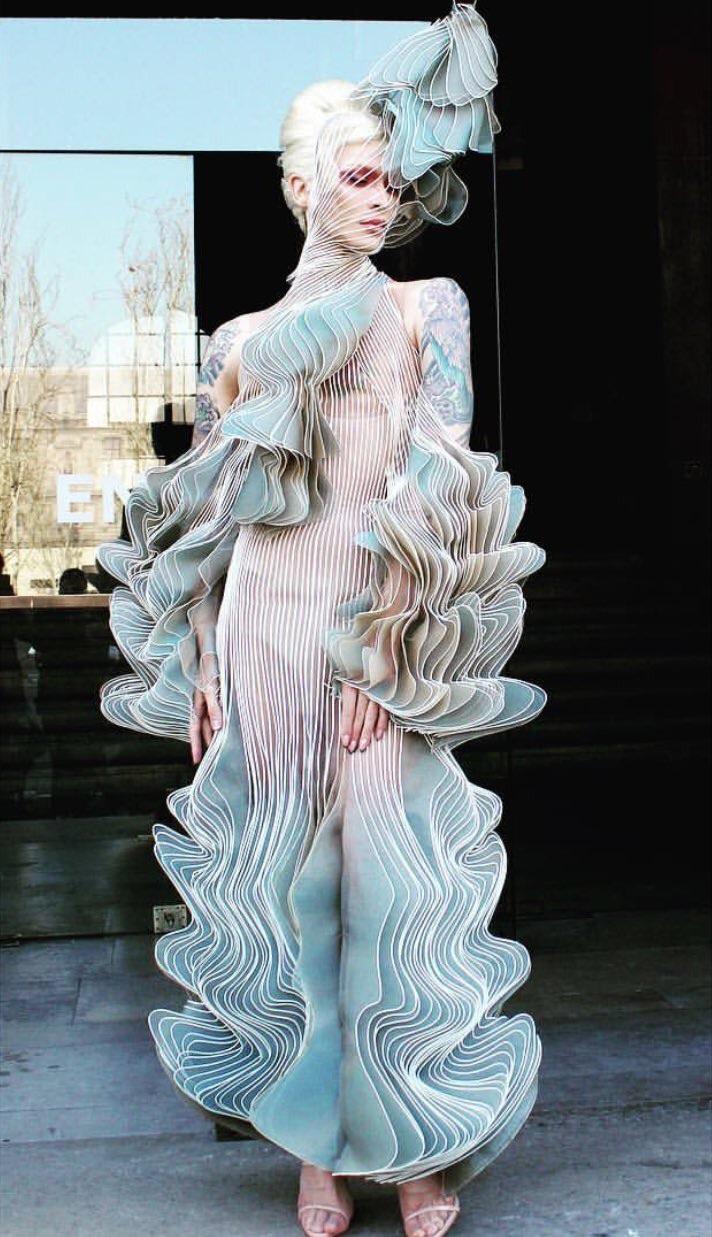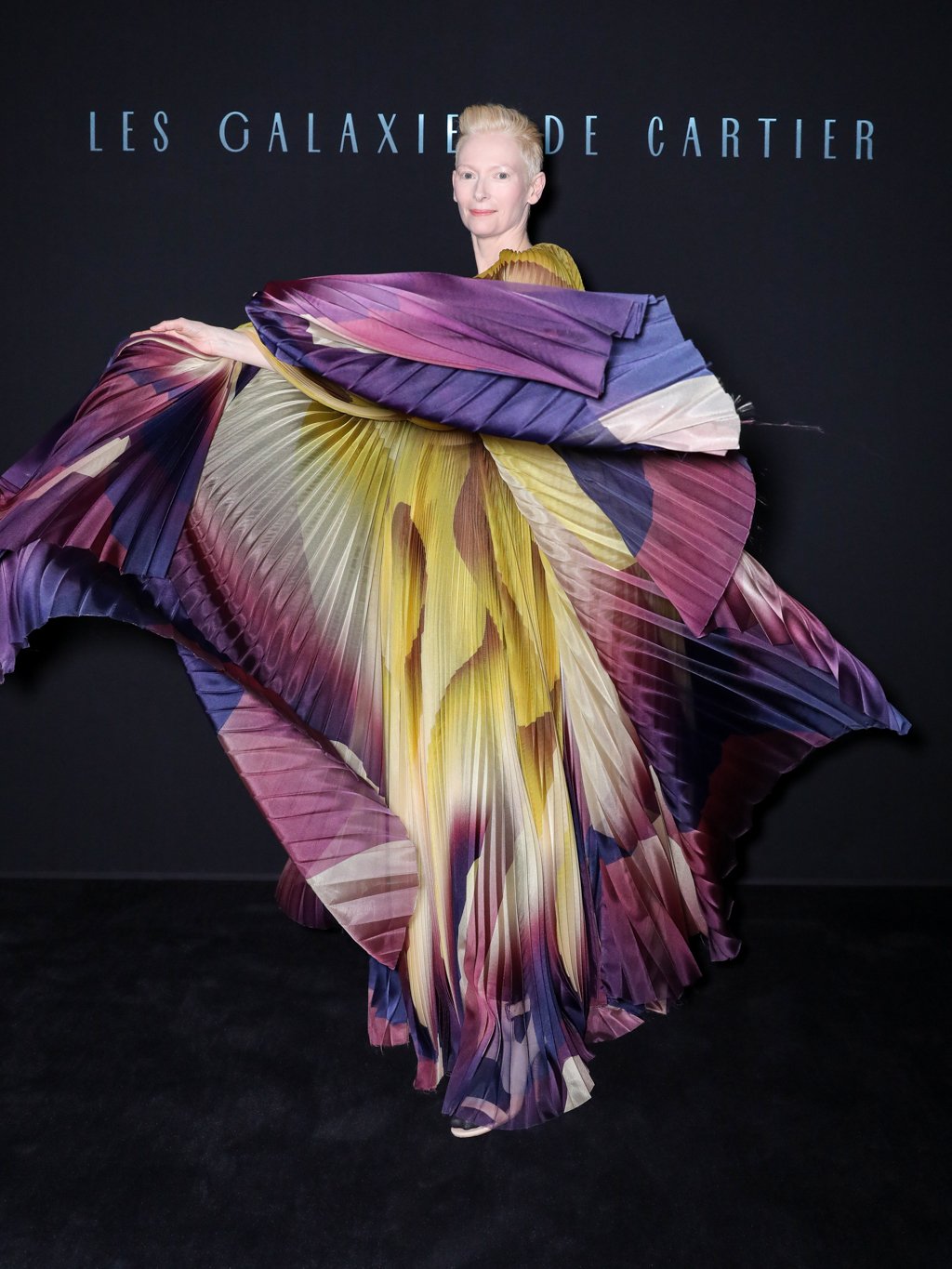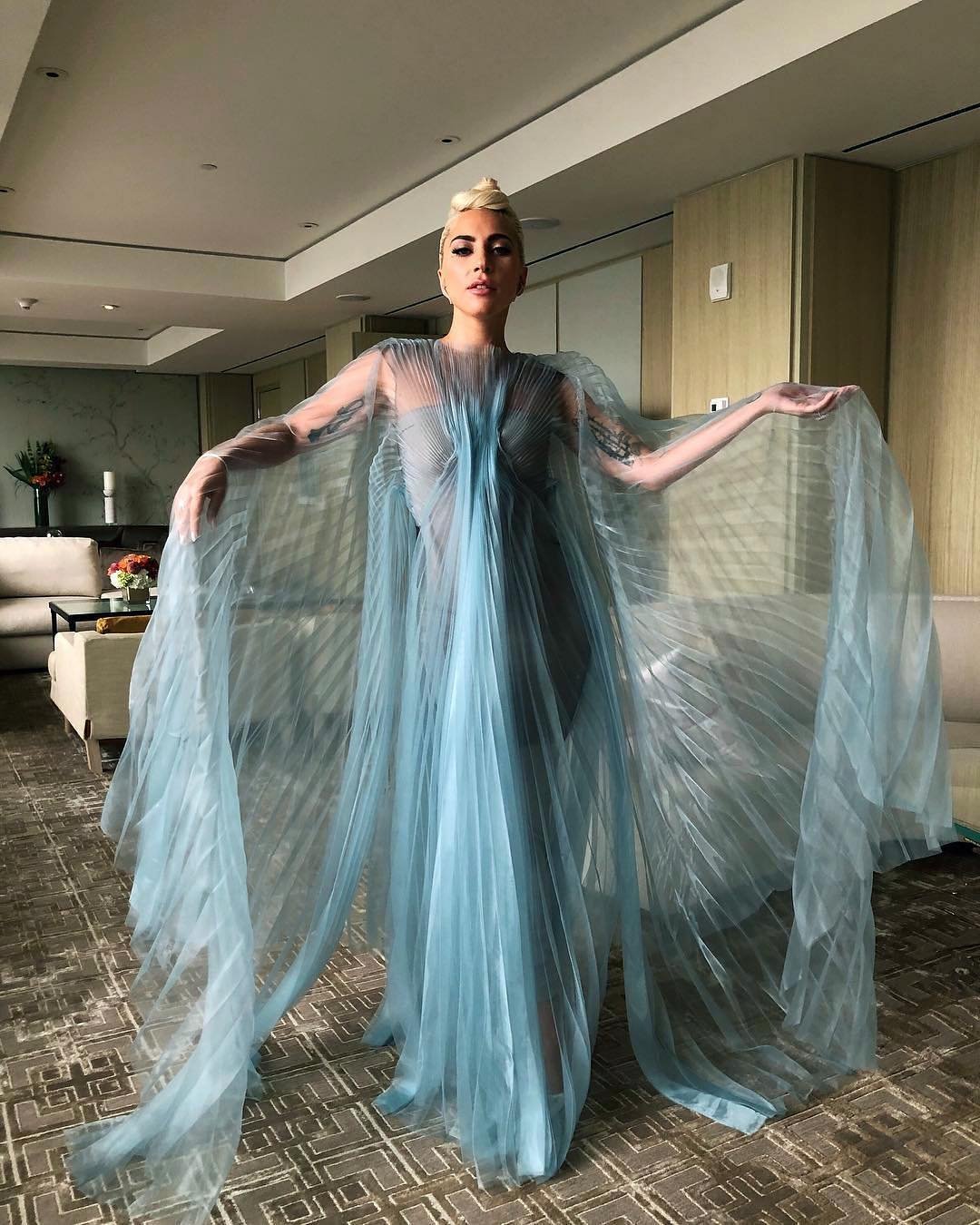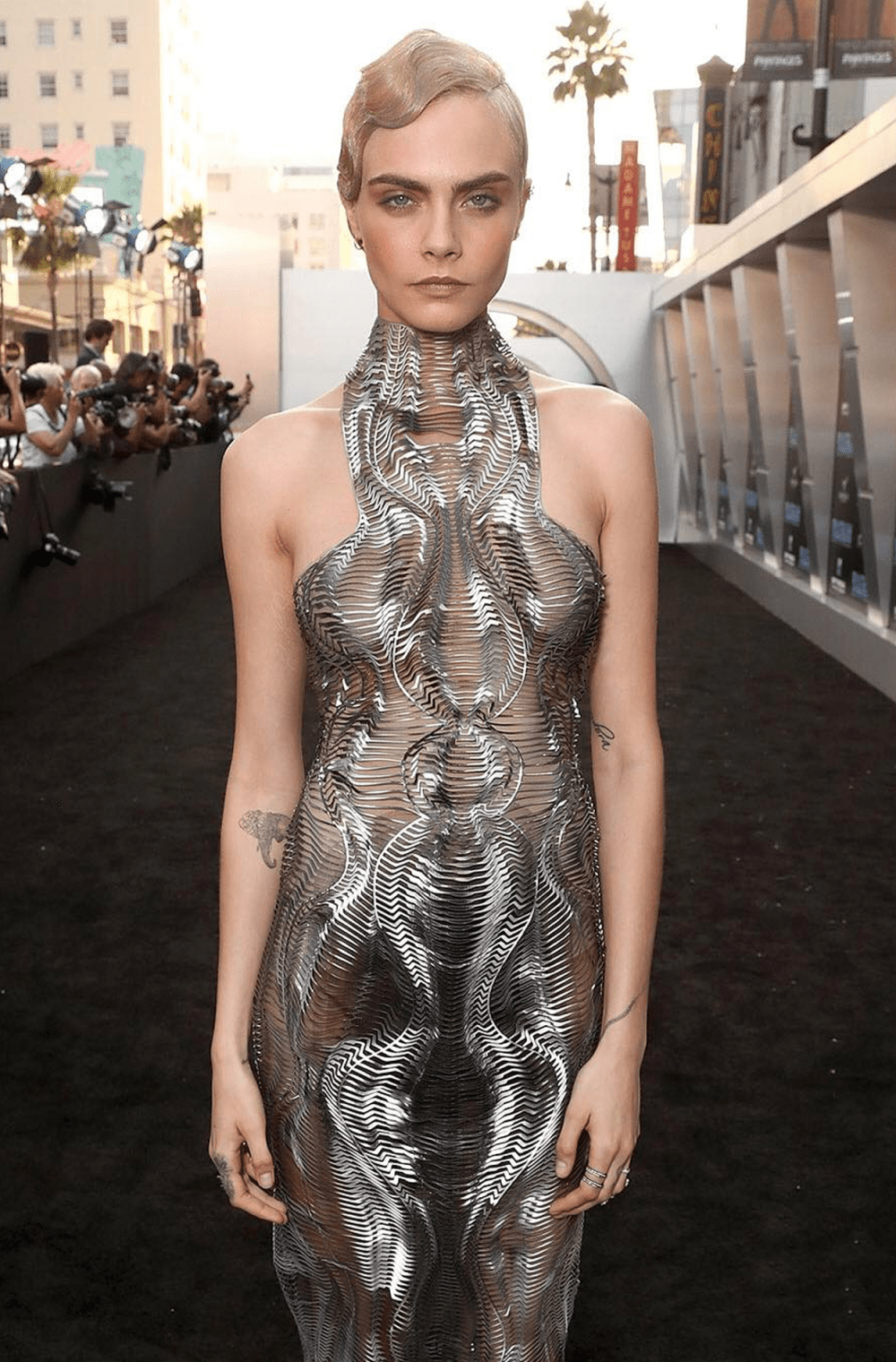Technological Couture - Iris van Herpen
By Hannah Schmidt-Rees
No designer blends haute couture fashion, technology and art better than Iris van Herpen. Brought to life, van Herpen's creations bend and break the rules of what haute couture fashion is. 3D-printed dresses made to look like exoskeletons, fabric flowing in mystical ways, laser cut fabric transforming the human form, bodices turning into second skins; Iris van Herpen is a designer to fall in love with.
After interning at Alexander McQueen, van Herpen started her label in 2007 (just a year after graduating university) by debuting her first collection Chemical Crows at Amsterdam Fashion Week. Her first 3D-printed garment was debuted in 2010 for her Spring 2011 Ready-to-Wear collection. The 'Crystallisation Top' (made from white polyamide) references the "mathematical beauty of the hard crystalline structures that appear when water freezes", as well as being a metaphor for the process of "initial ideas crystallising to form a tangible collection." From this point, van Herpen's work has remained interdisciplinary; often working with professionals in science, technology, art and architecture to create her garments.
Van Herpen is also known for using unconventional materials in her high fashion garments; including dragon skin (a high performance silicone used to simulate skin for films), boat rigging and the inner boning of umbrellas. Unlike other fashion designers, van Herpen uses her interest in art and sculpture to influence and create her designs, resulting in aesthetics and silhouettes never seen before. Being a ballet dancer until her late teens, van Herpen's background in ballet is highly evident in her costumes designed for the New York City Ballet. Outfitting the dancers in dresses made from black plastic pieces sewn onto stretch tulle, with matching hosiery that encased the dancer's calf and pointe shoe in black plastic, creating a design reminiscent of fetishwear. The point of this extreme design was to bring attention to discipline and pain experienced by ballet dancers to achieve the perfect form. Her incorporation of an incredibly stylised and artistic garment with the functional ability to move and adapt to the dancer’s body is evidence of her proficiency and expertise in fashion design.
The work of Iris van Herpen is unforgettable. Working with experimental performer Carlos van Camp, van Herpen created a skin-tight metal suit that enabled electricity to pass through and emit bolts of lightning. It was showcased at her Spring 2013 couture collection aptly named Voltage (you can watch it in action below, it's absolutely amazing). Iris van Herpen is one of the only fashion designers who are actively challenging the boundaries of couture fashion. Regardless of the current focus on fashion as a consumerist platform for celebrities, van Herpen's creations are a reminder of what couture fashion really is; a work of art. A platform to experiment, engage, show off and inspire. Van Herpen's ability to create these unforgettable spectacles, using fashion to elevate the potential of the human body, is something to be admired.
“I think there is an interesting relationship between clothes and the human body, in that wearing different clothing can definitely create some form of energy. It is psychological and very strong. I used to dance a lot, so movement, energy, its transformation within the body, and how you can control this has always been very fascinating for me. With Voltage, I dived into that subject directly.”
For her Fall 2014 show at Paris Fashion Week (titled Biopiracy), van Herpen collaborated with Belgian artist Lawrence Malstaf to suspend models between vacuum-packed sheets of transparent plastic. Floating in midair, the models were held in an almost embroyonic state; meditative and weightless; all three placed in a line in the centre of the catwalk. Titled, Biopiracy, van Herpen makes a comment on the commercialisation of the human body. 30% of the human genome is patented; 30% of our genetic code, the organic information that makes us who we are, is owned by corporations. Within her collection, van Herpen is presenting a set of questions about the future; the evolution of the relationship between humans and technology. The models suspending in plastic reflects a dystopian take, which contrasts from the beautiful relationship between the walking models and the clothing they're wearing; a result of the advances in technology creating beauty.
“Patents on our genes have been purchased. Are we still the sole proprietor of our bodies?”
Worn by Bjork, Lady Gaga, Solange, Miss Fame and Tilda Swinton; van Herpen provides garments to achieve a never seen before aesthetic. For celebrities that wish to showcase an artistic and incredibly well-made take on high fashion, van Herpen is at the top of the list. Understandably, many of van Herpen's works have been shown in multiple museum exhibitions, including the "Manus x Machina: Fashion in an Age of Technology" at the Metropolitan Museum of Art/Costume Institute in New York. There's even one of her pieces at the National Gallery of Victoria; so if you're ever in Melbourne, be sure to check it out.
If you want to learn more about iconic and ground-breaking fashion designers, Iris van Herpen is the place to start. Whilst I've only written about just a small amount of van Herpen's work in this post, I absolutely encourage you to look more into her work. You’ve probably seen her garments on the red carpet before without even knowing it. Read other articles about her, watch her runway shows. They're absolutely amazing and you won't regret it. Iris van Herpen is a fashion designer deserving of the recognition of praise, her work is breaking the boundaries of couture fashion and femininity; and what other designer is doing that in today’s world?
“I often get inspired by materials I cannot work with. I make a start, even if it’s impossible.”


